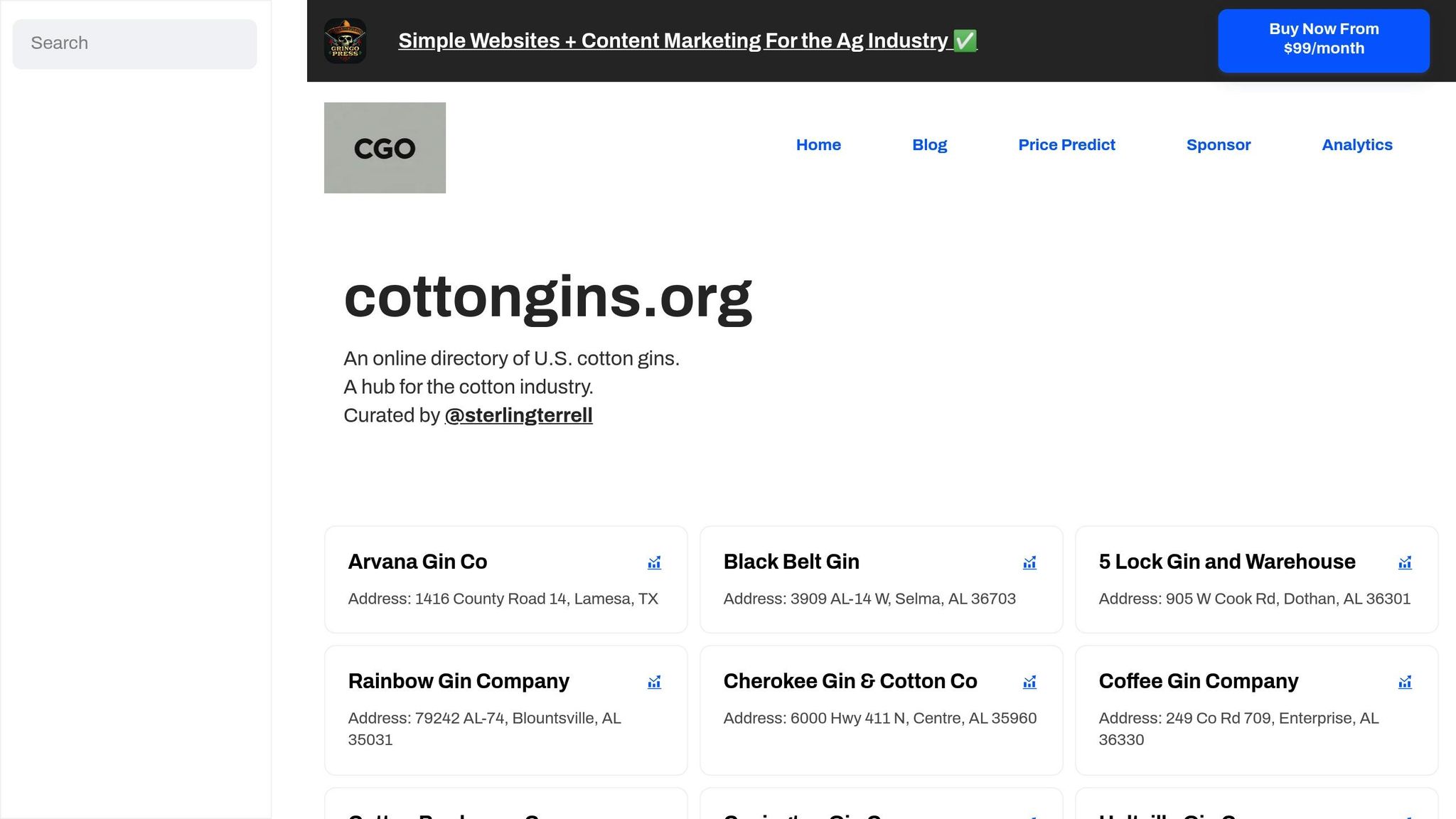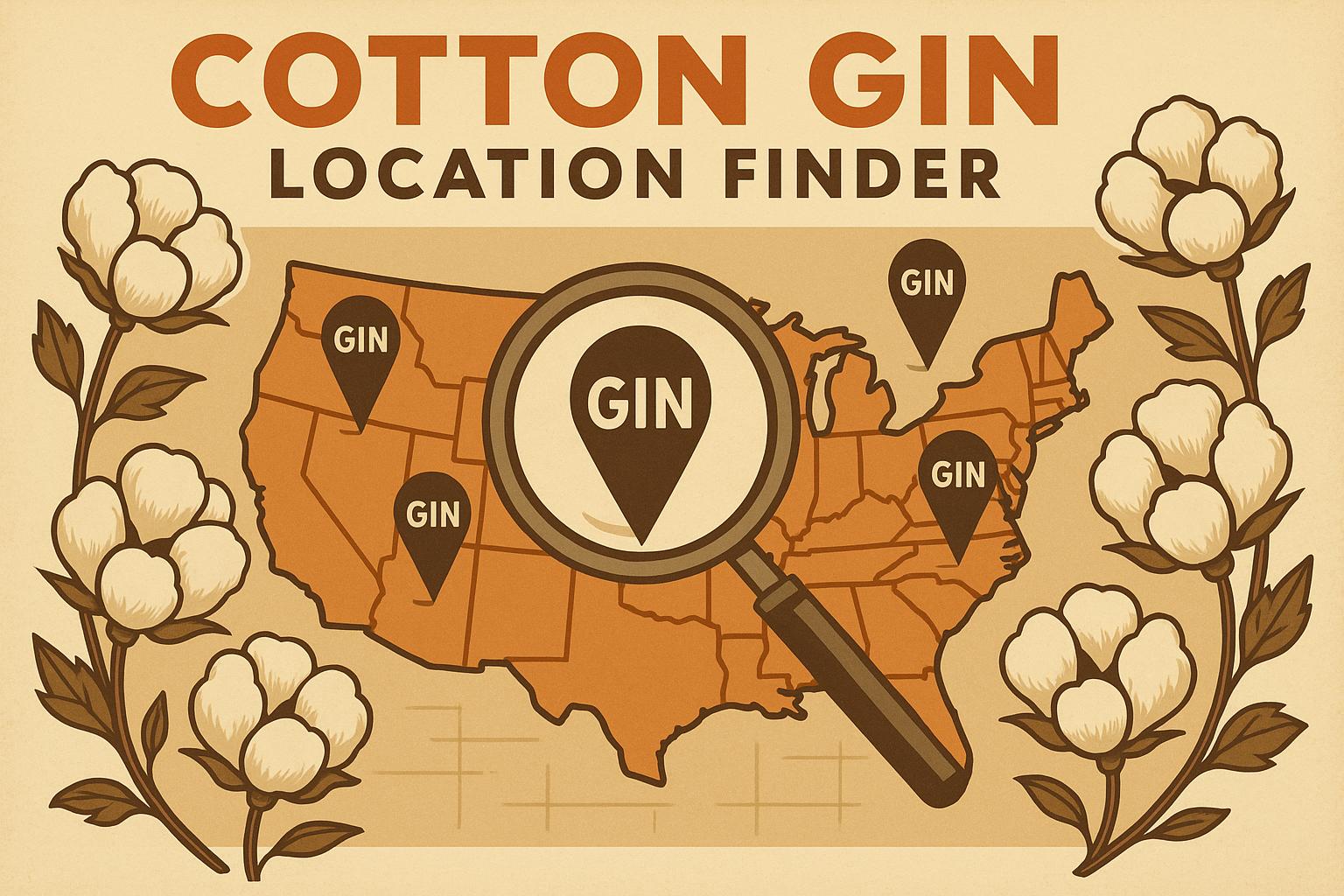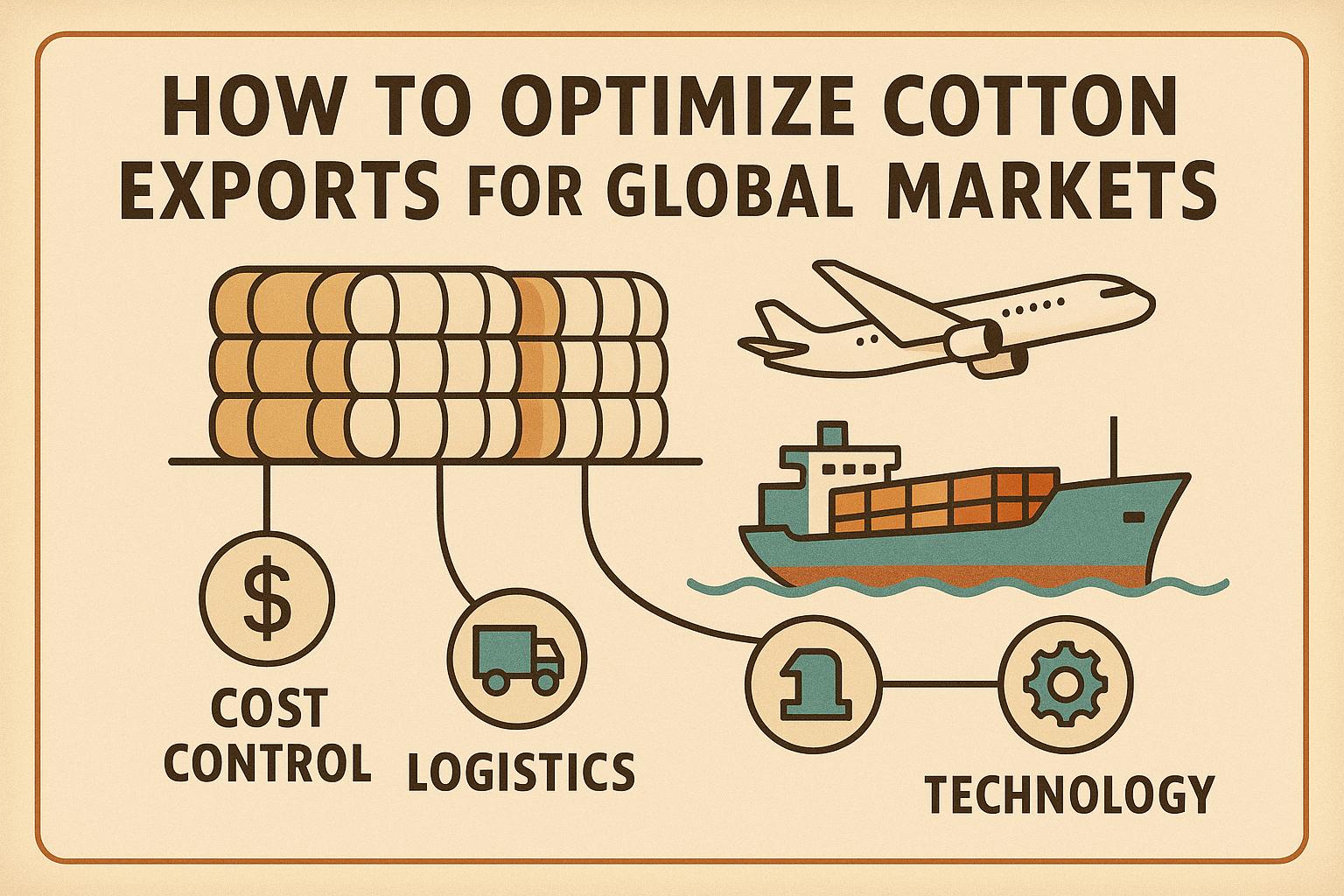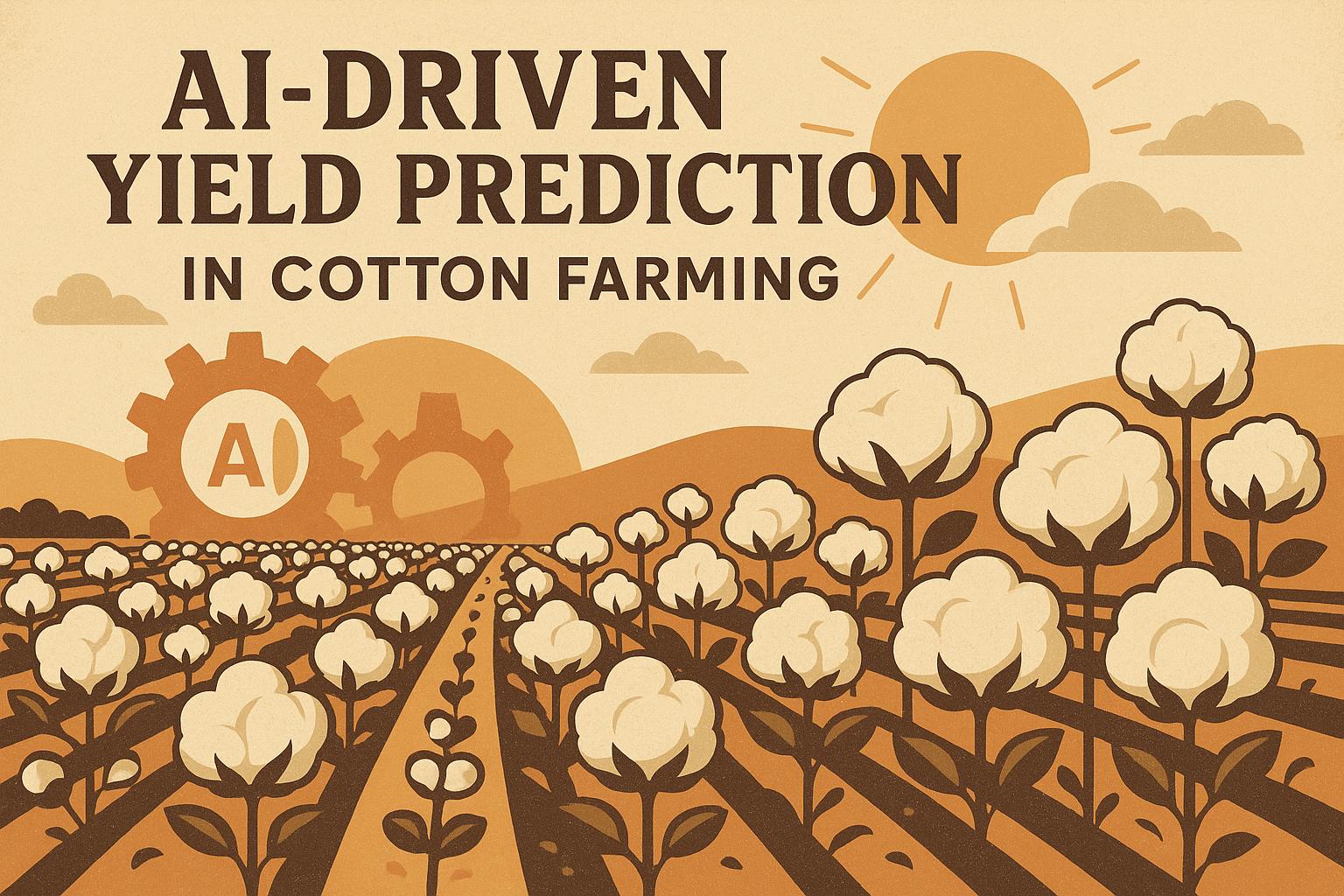Every year, millions of tons of cotton and textile waste end up in landfills, contributing to pollution and lost economic opportunities. However, new recycling methods and technologies are changing this. Here's what you need to know:
- Why It Matters: The U.S. generates over 16 million tons of textile waste annually, with only 15% recycled. Cotton waste takes centuries to decompose and contributes to greenhouse gas emissions.
- Key Drivers: Rising landfill costs, stricter regulations like California's SB 707, and growing consumer demand for eco-friendly products are pushing the industry toward recycling.
- Emerging Solutions: Advancements include:
- Mechanical Recycling: Improved fiber sorting and blending methods.
- Chemical Recycling: Breaking down cotton and polyester blends into reusable fibers.
- Biotech Innovations: Enzymes and proteins that decompose textiles quickly.
- Challenges: Blended fabrics, high costs, and scaling these technologies remain obstacles.
- Future Outlook: AI-powered sorting, chemical processes, and collaborative recycling models are expected to boost recycling rates and reduce waste.
Quick Overview of Recycling Methods:
| Method | Fiber Quality | Cost | Environmental Impact |
|---|---|---|---|
| Mechanical | Lower than virgin | Lower | Minimal |
| Chemical | Near-virgin | Higher | Moderate |
| Biotech (Enzymatic) | High | Moderate | Low |
The push for recycling isn't just about saving resources - it's about reshaping the textile industry's future. With the right mix of innovation, policy, and collaboration, cotton waste recycling could drastically reduce landfill contributions and redefine material use.
Recycled cotton becomes new fabric
What's Driving Cotton Waste Recycling Innovation
The push for innovation in cotton waste recycling comes from multiple directions: environmental concerns, regulatory pressures, and evolving market demands. Together, these forces are reshaping how the industry approaches textile waste, setting the stage for a deeper dive into the environmental and regulatory factors driving these changes.
Climate Challenges and Green Goals
In 2022, municipal solid waste landfills ranked as the third-largest source of human-related methane emissions in the U.S. According to the EPA, textile waste alone surged by over 50% between 2000 and 2018. This increase is largely tied to fast fashion, where cheaply made, less durable clothing leads to quicker disposal cycles.
Adding to the problem, synthetic textiles release microplastics into waterways and soil. Blended fabrics, combining cotton and synthetics, further complicate recycling efforts since separating these materials requires advanced technologies. These environmental pressures demand solutions that can both reduce emissions and manage growing waste volumes.
Landfill space is also becoming scarce in parts of the U.S., pushing communities to seek alternatives like waste incineration for energy recovery. However, this approach generates greenhouse gases and other pollutants, making it far from ideal.
The circular economy movement is gaining traction in the apparel industry, encouraging designs that focus on durability, repairability, and recyclability. This shift creates opportunities for technologies that can effectively transform cotton waste into reusable materials.
Research also highlights cotton's potential role in reducing environmental impact. A dynamic Life Cycle Assessment of cotton woven pants showed a 22% decrease in cumulative radiative forcing over a decade compared to static methods. This underscores cotton's ability to support carbon sequestration, further boosting the case for recycling efforts.
U.S. Regulations and Market Trends
Government policies are playing a pivotal role in driving recycling advancements. For instance, Massachusetts banned the disposal or incineration of textiles in November 2022. Similarly, California introduced the Responsible Textile Recovery Act of 2024 (SB 707), which enforces Extended Producer Responsibility, making apparel manufacturers accountable for managing textile waste . These measures are spurring rapid innovation in recycling technologies.
Other regulatory initiatives, such as landfill reduction targets and recycling rate goals, are also influencing industry practices. The recycled fibers market in the U.S., valued at $3.21 billion in 2024, is projected to grow at a compound annual growth rate (CAGR) of 7.6% from 2025 to 2030.
Consumer behavior is another driving force. Over the past five years, purchases of eco-friendly clothing have jumped by 35%, while funding for textile recycling research and development has grown by more than 12% annually. These trends reflect a rising commitment to sustainability across the market.
Recent industry developments highlight these shifts. In October 2024, Syre announced plans to build a textile chemical recycling facility in Cedar Creek, North Carolina, in partnership with polyester producer Selenis. This plant aims to produce 10,000 metric tons of chemically recycled polyester annually. Similarly, in January 2025, Reclaimed Cleaning Textiles acquired United-Southern Waste Material Company, creating the largest textile recycling operation in North Texas. In California alone, over 150,000 tons of textiles were diverted from landfills in 2023.
Companies across various industries, from textiles to construction, are increasingly using recycled fibers in their products. This shift aligns with corporate sustainability goals and growing consumer demand for environmentally friendly options. These changes not only reshape industry practices but also drive advancements in recycling technologies, paving the way for a greener future.
New Technologies in Cotton Waste Recycling
Advances in technology are tackling some of the biggest hurdles in cotton waste recycling, such as maintaining fiber quality, managing contamination, and separating blended materials. With stricter U.S. regulations and ambitious climate targets, these innovations play a key role in reducing waste and maximizing resource recovery.
Mechanical Recycling: A Modern Take on a Classic Process
Mechanical recycling has been around for nearly 250 years. The process involves cutting, shredding, and pulling apart fibers to create new materials. However, it has traditionally struggled with maintaining fiber quality through repeated cycles. Recent advancements, though, are giving this method a much-needed boost.
Automated sorting systems now use spectroscopic analysis and AI-driven machine learning to identify fiber types, colors, and contaminants with precision. Even so, recycled cotton fibers tend to be shorter and harder to spin compared to virgin cotton. To counteract this, companies are experimenting with innovative blends. For example, Hilaturas Ferre produces yarn made from 90% recycled cotton combined with 10% other fibers like polyester, nylon, or wool.
In the U.S., companies are finding creative ways to improve mechanical recycling. Eileen Fisher runs a "tiny factory" that transforms customer returns into new clothing, while C-Tech's Wear2 microwave technology uses dissolvable yarn to simplify fabric disassembly.
| Fiber Type | Length (Inch) | Strength (gf/Tex) | Uniformity Index |
|---|---|---|---|
| Virgin Cotton | 1.2 | 31.55 | 81.14 |
| Recycled Cotton | 0.83 | 27.84 | 58.74 |
While these mechanical improvements are making strides, chemical and biotech solutions are expanding the possibilities even further.
Chemical and Biotech Approaches
Chemical recycling takes textile waste down to its molecular building blocks, making it possible to handle mixed and contaminated materials. Unlike mechanical methods, this approach opens doors to recycling textiles that were previously deemed unrecyclable. It also significantly reduces greenhouse gas emissions - by up to 50% compared to producing virgin polyester - especially when powered by renewable energy.
"Chemical recycling has the potential to ideally convert synthetic fabric wastes into raw building-block materials, allowing for repeated use or fabrication of new polymer materials."
– Joungmo Cho, Ph.D., Principal Research Engineer, Korea Research Institute of Chemical Technology
On the biotech side, researchers are making impressive strides. At MIT, Ariel Furst and her team are developing proteins that can break down polymers in fabrics, allowing garments to decompose completely in just two weeks. Meanwhile, in Denmark, Professor Steffan Kvist Kristensen's team at Aarhus University has patented a process to separate elastane from nylon. By heating fabrics to about 437°F (225°C) and adding alcohol with potassium hydroxide, they can cleanly separate materials in just four hours, making previously hard-to-recycle fabrics much easier to manage.
With 100 billion garments produced each year - and 73% ending up in landfills or incinerated - chemical recycling technologies have the potential to transform waste into high-quality fibers for new production.
Tackling Cotton-Polyester Blends
Blended fabrics, a staple of modern clothing, have long been a challenge for recyclers. However, new integrated approaches are starting to change the game.
Hydrothermal and catalytic processes are emerging as effective methods for mixed-fiber recycling. By applying controlled heat, pressure, and chemical catalysts, these techniques can selectively break down specific components while leaving others intact. This approach works particularly well for cotton-polyester blends, which make up a large portion of textile waste.
One standout example is Rewin, which has successfully developed technology to recover polyester from complex blends containing 48% polyester, 48% cotton, and 4% anti-static fibers, even handling tricky elements like buttons and zippers. On the digital side, Reverse Resources is creating software that helps manufacturers identify recyclable materials and directs them to the right facilities, optimizing the recycling process.
The financial implications are also noteworthy. While recycled textiles are currently more expensive to produce than virgin materials, advancements in blend separation technology are beginning to tip the scales. As Professor Yiqi Yang from the University of Nebraska points out:
"In the last 20 years, the total fiber production has doubled... If you can reuse fibers once or twice, that will be a huge reduction on the demand for new fibers and textile materials."
Today, less than 0.5% of post-consumer textile waste is recycled globally. With the rise of stretchable fabrics and complex blends, these separation technologies are becoming essential for minimizing waste and creating a more sustainable textile industry.
Lifecycle Assessment of Recycling Technologies
Evaluating the lifecycle of recycling technologies - from energy consumption to waste reduction - provides a clearer picture of their environmental and economic impacts. This analysis builds on earlier discussions of technological advancements, highlighting how these innovations translate into measurable benefits. Recent studies reveal stark contrasts between traditional disposal methods and newer recycling approaches.
Comparing Environmental Impacts
Lifecycle assessments shed light on the tangible environmental benefits of recycling technologies. For instance, Recover™ recycled cotton fiber saves up to 2,116 liters of water and reduces emissions by 1.73 kg of CO2 equivalent per kilogram produced - an impressive 87% reduction compared to conventional cotton production. By comparison, producing a single cotton shirt using traditional methods requires approximately 2,700 liters of water, underscoring the significant resource savings.
With 92 million tons of fabric waste landing in landfills annually and the fashion industry contributing roughly 10% of global greenhouse gas emissions, these advancements in recycling are not just beneficial - they're essential.
Different recycling methods offer varying advantages. Mechanical recycling, though producing lower-quality fibers, is the most energy-efficient. Chemical recycling, on the other hand, processes complex blended materials and produces fibers close to virgin quality, albeit with higher energy demands. Meanwhile, enzymatic recycling stands out for its low carbon footprint - 1 ton of CO2 equivalent per metric ton of waste-derived pulp, which is ten times less than virgin wood pulp viscose.
It's also worth noting that industrial cotton farming emits 3.5 times more CO2 than organic cotton cultivation. While natural fibers generally have a smaller carbon footprint than synthetic ones, recycling technologies like enzymatic recycling offer an even greener alternative.
Here's a quick comparison of key metrics across recycling methods and virgin production:
| Recycling Method | Water Usage | Energy Consumption | Fiber Quality | Environmental Impact |
|---|---|---|---|---|
| Mechanical | Minimal | Low | Reduced quality | Lowest impact |
| Chemical | High | High | Near-virgin quality | Moderate impact |
| Enzymatic | Moderate | Moderate | High quality | Very low carbon footprint |
| Virgin Cotton Production | 2,700 L per shirt | High | Highest quality | Highest impact |
Economic Considerations and Broader Impacts
Economically, recycled textiles still cost more to produce than virgin materials. However, this gap is narrowing. For example, recycled carbon fibers are 20–40% cheaper than their virgin counterparts. Programs like Blue Jeans Go Green™, which has diverted over 2,832 tons of textile waste from landfills since 2006, further demonstrate the economic and environmental potential of recycling.
"Mechanical recycling can play an equally valid role in the portfolio of circular solutions while chemical or 'regenerative' recycling can ultimately enable the replacement of virgin resources, to address future resource constraints and help to deliver the industry's net zero greenhouse gas emissions target by 2050." – Cyndi Rhoades, founder, Worn Again Technologies
Beyond immediate savings, the benefits of recycling extend to waste management. Reuse and recycling consistently outperform incineration and landfilling in reducing environmental impact, with reuse providing the most significant gains by avoiding the need for new production. In the U.S. alone, 11.3 million tons of textiles were sent to landfills in 2018, accounting for 7.7% of all municipal solid waste. Globally, textile waste is projected to hit 148 million tons by 2030, marking a 60% increase from 2015.
The Power of Integration
The future lies in combining recycling methods to maximize their strengths. As Harald Cavalli-Björkman, Chief Growth Officer at Renewcell, explains:
"We see a major synergy opportunity in combining mechanically recycled cotton with chemically recycled MMCs to achieve a feel, quality and price that offers a direct substitute to virgin cotton fabrics in significant volumes. It offers a path to shifting not just MMC but also cotton demand to 100% circular and biodegradable textiles at massive scale." – Harald Cavalli-Björkman, Chief Growth Officer, Renewcell
This integrated approach highlights how different recycling technologies complement one another. By leveraging their unique strengths, it becomes possible to achieve both environmental gains and economic feasibility, paving the way for a thriving circular economy in textile recycling.
sbb-itb-0e617ca
Using Directories for Recycling Initiatives
Recycling efforts in the cotton industry thrive on collaboration. For advanced recycling technologies to succeed, cotton waste producers, recyclers, and technology providers need to work together effectively. Directories like cottongins.org help make this collaboration smoother by providing accurate, up-to-date information, acting as a crucial link in the circular economy.
Connecting Stakeholders via cottongins.org

The cottongins.org directory is a go-to resource for locating cotton gins across the United States, organized by counties and states. With its detailed data, recycling stakeholders can quickly pinpoint sources of cotton waste and plan logistics more efficiently. This reduces the time spent on research and helps recyclers optimize transportation routes, cutting costs and improving collection strategies.
The directory also stays relevant with its submission feature, allowing users to add new cotton gins as the industry grows. This ensures that recyclers have access to the most current information, enabling them to identify waste clusters and streamline their operations.
Sponsorships and Industry Visibility
Beyond its directory services, cottongins.org offers sponsorship opportunities that enhance industry visibility while supporting its mission of connecting stakeholders.
- Sponsored Posts: For $200 per post, companies can share new technologies, case studies, or services directly with cotton industry professionals. These posts are featured prominently on the site for a day, shared on social media, and archived for long-term access.
- Official Sponsor Program: At $200 per month, this program includes logo placement and backlinks on the main page footer and a dedicated sponsor page. Annual sponsors also receive a complimentary Sponsored Post, adding extra value.
- Featured Sponsors: Priced at $400 per month, this premium option includes prime positioning on the site and two free Sponsored Posts with an annual commitment. It’s an excellent choice for companies introducing cutting-edge recycling technologies or waste management solutions.
To extend the reach of sponsored content, the directory also features a mailing list, ensuring updates about recycling initiatives are sent directly to engaged industry professionals.
These sponsorship options not only enhance visibility but also strengthen the integration of recycling efforts within the cotton industry. By fostering better connections among stakeholders, cottongins.org supports both operational efficiency and sustainable practices in the sector.
The Future of Cotton Waste Recycling
The future of cotton waste recycling is poised for transformation, fueled by technological advancements and evolving policies. With over 11 million tons of textiles ending up in U.S. landfills each year and only a fraction being recycled, there’s immense potential for change. Addressing this challenge, innovative technologies and strategic initiatives are paving the way for a more sustainable approach to cotton waste.
Automation and Artificial Intelligence in Recycling
Artificial intelligence (AI) and robotics are spearheading the shift toward fully automated recycling processes. A notable example comes from the Golisano Institute for Sustainability at RIT, where researchers have developed an AI-powered robotic arm capable of processing a new garment every 10 seconds. Using machine learning and laser technology, the system identifies and separates non-recyclable materials. As Associate Research Professor Abu Islam explains:
"In used clothing, every item is different. That unpredictability means the system must make on-the-spot decisions."
This groundbreaking US$1.3 million project, funded by Nike, Goodwill, and Ambercycle, highlights the potential of automation to revolutionize textile recycling.
Advances in Recycling Methods
Chemical processes such as solvolysis and pyrolysis are making strides in breaking down synthetic materials like polyester into reusable monomers, producing fibers almost identical to new ones. Unlike mechanical recycling, which often compromises fiber quality, these methods preserve material integrity. On the natural fiber front, biological recycling techniques for materials like cotton and wool are emerging, though they still require further refinement.
Scaling Infrastructure and Industry Collaboration
Efforts to scale recycling facilities are already underway. Renewcell’s industrial recycling plant in Sweden, launched in August 2022, has the capacity to process up to 60,000 metric tons of textiles annually. In the U.S., partnerships like the one between Goodwill, Reju, and WM aim to create regional models for textile collection, sorting, reuse, and recycling. Reju has plans for a U.S.-based regeneration hub set to be operational by 2028.
Extended Producer Responsibility (EPR) regulations are also driving change. These policies require brands to take responsibility for their products at the end of their lifecycle, prompting the development of take-back programs and recyclable product designs.
Challenges and the Path Forward
Despite the progress, significant obstacles remain. Blended fabrics, dyes, and chemical finishes complicate recycling processes. Scaling automation while maintaining quality standards presents additional hurdles.
To overcome these challenges, the industry must focus on integrating automated sorting systems, advancing chemical recycling technologies, and improving material labeling for better recyclability. Consumer behavior also plays a critical role, as shifting toward sustainable practices can accelerate progress.
Patrik Frisk, CEO of Reju, emphasizes the importance of collaboration:
"Addressing textile waste challenges requires robust collaboration, and through our potential project with Goodwill and WM, we are building the ecosystem to achieve textile circularity."
Recent studies suggest that 60% of materials are suitable for current recycling methods, providing a solid foundation for future growth. Over the next decade, as these technologies mature and scale, recycling rates are expected to rise significantly. This progress could divert millions of tons of textile waste from landfills, while also creating opportunities across design, manufacturing, and recycling within a circular economy.
FAQs
What are the biggest challenges in recycling cotton waste, and how are new technologies solving them?
Recycling cotton waste comes with its fair share of challenges. Issues like separating mixed materials, handling blended fibers, and the lack of proper recycling infrastructure often make large-scale efforts inefficient and difficult to maintain.
Thankfully, new technologies are starting to tackle these obstacles. AI-driven sorting systems can precisely identify and separate different materials, making the process faster and more accurate. Meanwhile, machines equipped with sensors are simplifying how cotton waste is processed. On top of that, cutting-edge chemical recycling techniques can now break down blended fabrics, allowing for the recovery of high-quality materials. These advancements are opening up possibilities for more efficient cotton recycling, reducing waste, and contributing to a circular textile economy.
How does California's SB 707 impact the advancement of cotton waste recycling technologies?
California's SB 707 and Cotton Waste Recycling
California's SB 707 marks a major step forward for cotton waste recycling by introducing the United States' first extended producer responsibility (EPR) law for textiles. This groundbreaking legislation places the responsibility of managing textile waste directly on apparel manufacturers. The goal? To push companies toward creating better recycling and upcycling solutions.
By establishing these new regulatory requirements, SB 707 encourages the adoption of advanced technologies aimed at making cotton waste recycling more efficient. The result is a dual benefit: cutting down on textile waste while promoting a more environmentally conscious and accountable textile industry nationwide.
How does consumer behavior impact cotton waste recycling, and what steps can individuals take to support it?
The Role of Consumer Behavior in Cotton Waste Recycling
The choices we make as consumers play a huge part in the success of cotton waste recycling. By cutting back on fast fashion and choosing products made from recycled cotton, we can fuel the demand for more sustainable practices. On top of that, properly sorting and recycling textiles ensures that more cotton waste avoids ending up in landfills.
You can make a difference by supporting brands that prioritize recycling, donating old textiles to recycling programs, or joining local initiatives that encourage textile reuse. These small yet intentional steps can collectively reduce environmental harm and pave the way for a more sustainable future in cotton textile use.


